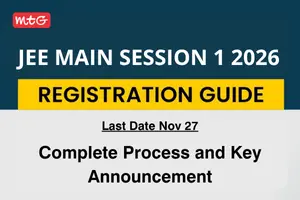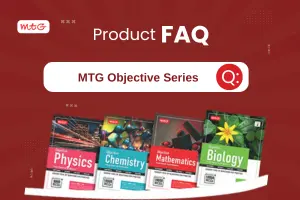
Seeking admission into an Engineering or Pharmacy college/university of your choice in Andhra Pradesh? The AP EAPCET conducted by Jawaharlal Nehru Technological University (JNTU), Kakinada can be your key to the state’s top private colleges and universities. The entrance test is conducted every year on behalf of the Andhra Pradesh State Council of Higher Education to offer admission to students in engineering, pharmacy, and agriculture domains. The exam assesses student’s understanding of various subjects such as physics, chemistry, mathematics, and biology.
AP EAPCET 2025 Exam Dates
The Andhra Pradesh State Council of Higher Education (APSCHE) has declared the exam dates for the Andhra Pradesh Engineering, Agriculture and Pharmacy Common Entrance Test (AP EAPCET). The exams are scheduled to take place from May 19 to 27, 2025 for engineering and pharmacy & agriculture students.
AP EAPCET 2025 Exam Dates
| Domain | Dates |
|---|---|
| Engineering | May 21 to 27, 2025 |
| Pharmacy and Agriculture | May 19 to 20, 2025 |
AP EAPCET 2025 Exam Pattern
| Features | Details |
|---|---|
| Exam mode | Online |
| Exam duration | 3 hours |
| Exam timings | 9 am to 12 pm / 2 pm to 5 pm |
| Exam medium | English, Telugu, and Urdu |
| Number of Questions | 160 |
| Type of Questions | Multiple Choice Questions (MCQs) |
AP EAPCET 2025 Subject-wise weightage
| Subject | Questions | Marks |
|---|---|---|
| Physics | 40 | 40 |
| Chemistry | 40 | 40 |
| Mathematics / Biology | 80 | 80 |
Each question carries one mark and there is no negative marking for incorrect answers.
AP EAPCET 2025 Syllabus
Engineering aspirants of the AP EAPCET exam have to attempt questions from Physics, Chemistry, and Mathematics. On the other hand, Agriculture and Pharmacy aspirants of the AP EAPCET exam have to attempt questions from Physics, Chemistry, and Biology. The syllabus of Physics and Chemistry will be the same for both engineering and agriculture & pharmacy aspirants. Let’s have a look at the Physics and Chemistry syllabus before segregating the syllabus for mathematics and biology.
AP EAPCET Physics Syllabus
| Physical world | Units and measurements | Motion in a straight line |
|---|---|---|
| Motion in a plane | Laws of motion | Work, energy and power |
| System of particles and rotational motion | Oscillations | Gravitation |
| Mechanical properties of solids | Mechanical properties of fluids | Thermal properties of matter |
| Thermodynamics | Kinetic theory | Waves |
| Ray optics and optical instruments | Wave optics | Electric charges and fields |
| Electrostatic potential and capacitance | Current electricity | Moving charges and magnetism |
| Magnetism and matter | Electromagnetic induction | Alternating current |
| Electromagnetic waves | Dual nature of radiation and matter | Atoms |
| Nuclei | Semiconductor electronics: materials, devices and simple circuits | Communication systems |
AP EAPCET Chemistry Syllabus
| Atomic structure | Classification of elements and periodicity in properties | Chemical bonding and molecular structure |
|---|---|---|
| States of matter: gases and liquids | Stoichiometry | Thermodynamics |
| Chemical equilibrium and acids-bases | Hydrogen and its compounds | The s-block elements (alkali and alkaline earth metals) |
| P- block elements group 13 (boron family) | P-block elements - group 14 (carbon family) | Environmental chemistry |
| Organic chemistry-some basic principles and techniques and hydro carbons | solid state | Solutions |
| Electrochemistry and chemical kinetics | Surface chemistry | General principles of metallurgy |
| P-block elements | D and f block elements & coordination compounds | Polymers |
| Biomolecules | Chemistry in everydaylife | Halo alkanes and halo arenes |
| Organic compounds containing c, h and o (alcohols, phenols, ethers, aldehydes, ketones and carboxylicacids) | Organic compounds containing nitrogen |
Mathematics Syllabus for Engineering Aspirants
Let’s have a look at the mathematics syllabus unit-wise.
| ALGEBRA | TRIGONOMETRY | VECTOR ALGEBRA | MEASURES OF DISPERSION AND PROBABILITY | COORDINATE GEOMETRY | CALCULUS |
|---|---|---|---|---|---|
| Functions | Trigonometric Ratios upto Transformations | Addition of Vectors | Measures of Dispersion | Locus | Limits and Continuity |
| Mathematical Induction | Trigonometric Equations | Product of Vectors | Probability | Transformation of Axes | Differentiation |
| Matrices | Inverse Trigonometric Functions | Random Variables and Probability Distributions | The Straight Line | Applications of Derivatives | |
| Complex Numbers | Hyperbolic Functions | Pair of Straight lines | Integration | ||
| De Moivre’s Theorem | Properties of Triangles | Circle | Definite Integrals | ||
| Quadratic Expressions | System of circles | Differential equations | |||
| Theory of Equations | Parabola | ||||
| Permutations and Combinations | Ellipse | ||||
| Binomial Theorem | Hyperbola | ||||
| Partial fractions | Three Dimensional Coordinates | ||||
| Direction Cosines and Direction Ratios | |||||
| Plane |
Biology Syllabus for Agriculture & Pharmacy Aspirants
| Diversity in the living world | Structural organisation in plants- morphology | Reproduction in plants | Plant systematics | Cell structure and function | Internal organisation of plants | Plant ecology | Plant physiology | Microbiology | Genetics | Molecular biology | Biotechnology | Plants, microbes & human welfare |
|---|---|---|---|---|---|---|---|---|---|---|---|---|
| The living world | Morphology of flowering Plant: Vegetative | Modes of Reproduction | Taxonomy of angiosperms | Cell- The Unit of Lif | Histology and Anatomy of Flowering Plants | Ecological Adaptations, Succession and Ecological Services | Transport in Plant | Bacteria | Principles of Inheritance and Variation | Molecular Basis of inheritance | Principles and processes of Biotechnology | Strategies for enhancement in food production |
| Biological Classification | Reproductive | Sexual Reproduction in Flowering Plants | Biomolecules | Mineral Nutrition | Viruses | Biotechnology and its applications | Microbes in Human Welfare | |||||
| Science of plants– Botany | Flower | Cell cycle and Cell Division | Enzymes | |||||||||
| Plant Kingdom | Fruits | Photosynthesis in Higher Plant | ||||||||||
| Respiration of Plants | ||||||||||||
| Plant Growth and Development |
AP EAPCET 2025 Preparation Materials
The engineering aspirants aiming to crack AP EAPCET 2025 must prepare from MTG’s Chapterwise Previous Years (2020-2024) Solved Question Papers of Physics, Chemistry, and Mathematics. The book is specifically compiled to upgrade your practice and ensure an exam-winning practice. The Physics, Chemistry, and Mathematics books have more than 7500 questions cumulatively. Moreover, it has 48 chapterwise solved online papers of all shifts from the past five years. This book is an ideal companion to become well-familiarized with its exam pattern.
So, what are you waiting for? Only a couple of months remain before the AP EAPCET 2025 exam. Start your preparations now with MTG and come with flying colours in your exam.






























